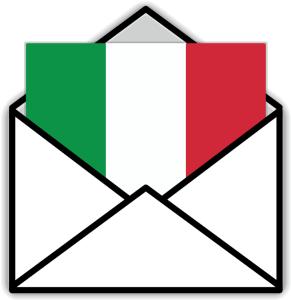What Are Possessive Adjectives in Italian?
The possessive adjectives are those words that translate from the English: “my, your, her, his, our, their”. They denote ownership between two objects.
For example,
- La mia cassa → my house
- Il suo cane → his dog
- Il nostro lavoro → our job
In Italian, a possessive adjective in always used before a noun and preceded by a definite article, as in the examples given above. Because they are adjectives, it’s important to remember that you’ll need to modify them according to the gender and number of the noun they are preceding.
For example, the English possessive adjective ‘my’ has four possibile translations in Italian.
| Mio | My (singular masculine) | Il mio libro |
| Mia | My (singular feminine) | La mia casa |
| Miei | My (plural masculine) | I miei amici |
| Mie | My (plural feminine) | Le mie amiche |
Complete Italian Possessive Adjectives Chart
| Person | Singular (Masculine) | Singular (Feminine) | Plural (Masculine) | Plural (Feminine) |
|---|---|---|---|---|
| 1st Person (io) | mio (my) | mia (my) | miei (my) | mie (my) |
| 2nd Person (tu) | tuo (your) | tua (your) | tuoi (your) | tue (your) |
| 3rd Person (lui/lei) | suo (his/her) | sua (his/her) | suoi (his/her) | sue (his/her) |
| 1st Person (noi) | nostro (our) | nostra (our) | nostri (our) | nostre (our) |
| 2nd Person (voi) | vostro (your) | vostra (your) | vostri (your) | vostre (your) |
| 3rd Person (loro) | loro (their) | loro (their) | loro (their) | loro (their) |
Italian vs. English
Italian and English possessive adjectives are not always used in the same way. Let’s delve into the differences in usage.
| Aspect | Italian | English |
|---|---|---|
| Use of Articles | Italian possessive adjectives are always accompanied by articles (except in some cases). | English possessive adjectives are never used with articles. |
| Example | La mia borsa Il nostro libro La sua ragazza Il suo gatto | My bag Our book His girlfriend Her cat |
| His/Her Agreement | Italian possessive adjectives must agree in gender and number with the owned object, not the owner. | English possessive adjectives agree with the owner, not the owned object. |
| Example | Il suo cane * Il suo amico* | His or her dog* His or her friend* |
The Italian Possessive Adjectives With Family Members
The possessive adjectives must always be preceded by an article, as was previously mentioned, with one major exception.
The use of possessive adjectives with family members.
The article is omitted when referring to family members in the singular (such as madre, padre, sorella, zio, cugino, etc.). No wonder, this is one of the most recurring mistakes Italian learners make.
Examples,
| Mia madre ( | My mother |
| Mia moglie ( | My wife |
| Mio marito( | My husband |
| Mio padre ( | My father |
| Mia sorella ( | My sister |
| Mio fratello ( | My brother |
| Mio zio ( | My uncle |
| Mio cugino ( | My cousin |
| Mio nonno ( | My grandfather |
| Mia nonna ( | My grandmother |
| Mio cognato ( | My brother-in-law |
Nevertheless, the article is always used:
#1 When referring to more than one relative
- Le mie sorelle – my sisters
- I suoi fratelli – her/his brothers
- I miei cugini – my cousins
- I nostri zii – our uncles
- I loro nonni – their grandparents
#2 When an adjective is used to describe the relative
- La mia amata madre – my beloved mother
- Il mio caro padre – my dear father
- Il mio carissimo zio – my beloved uncle
3# With the possessive adjective loro:
- La loro madre – their mother
- Il loro padre – their father
- Le loro sorelle – their sisters
Remember that the possessive “loro” is always the same and that the article before it determines the gender and number.
- Il loro amico – their friend (m.)
- La loro amica – their friend (f.)
- I loro amici – their friends
Interesting uses of the possessive adjectives
(If you’re a beginner or intermediate Italian learner, you can skip this for now)
The Italian possessive adjective is always placed before the noun. However, in some cases, when it follows the noun, it is used to emphasize or stress the emotional meaning of the sentence.
- Mamma mia!
- Questa è casa mia! –
In certain idiomatic expressions, the possessives are used as nouns.
- I miei – My parents
- I tuoi – Your parents
- Alla nostra! – Cheers
Finally, when the possessive is used as a pronoun (not attached to a noun, but replacing a noun), the articles are often omitted.
- Di chi è questa borsa? E’ mia / Whose bag is this? It’s mine
- Di chi è questa casa? E’ sua / Whose house is this? It’s hers
Also note that in Italian, the possessive adjectives and pronouns have the same identical form. Italian does not make the difference between “my” and “mine” (mio/a/i/e) or “our” and “ours” (nostro/a/i/e).
For example,
- It’s mine = è mio
- It’s hers = suo
- It’s our = è nostro
- It’s theirs = è loro







